What a great week of instruction last week! For the first time this school year, I was able to focus on the design and planting portion of the “Tomatosphere” unit. At last, students have sufficient background about data collection and communicating data and they have begun their research about plants, seeds, and tomatoes…so this week, they used the engineering design process to think about, plan, and create the planters that will house their tomato plants. 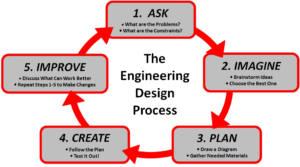
To help with the creation/fabrication of the planters, students visited the MCAS FRC East Fab Lab and watched Mr. Lewis, the engineer in charge of the lab, create and talk about the creation portion of the engineering design process.
I had asked students during the days leading up to the visit to think about things that could hold the seeds that we are going to plant. It was really fun to see and hear about all the interesting ideas that students came up with. There were students who suggested vases. Others who thought plastic bags worked best. Then, a few students even had the idea to house the seedlings in shoes. I explained to them that this is the imagine phase of the engineering design process. We discussed the ideas that they came up with and decided on one idea that they wanted to create. 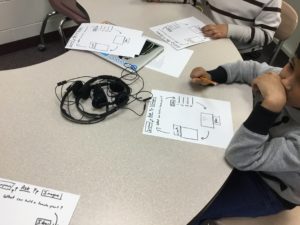 As I told them, engineers do the same thing as they are thinking about ways to solve problems. The next phase of the process is coming up with a plan for their idea. I informed the students that during this phase, engineers create what are called “blueprints”. I let the students know that blueprints are generated using computer programs and we even got to see the plans that the engineer and I designed to build the planters that we would see created.
As I told them, engineers do the same thing as they are thinking about ways to solve problems. The next phase of the process is coming up with a plan for their idea. I informed the students that during this phase, engineers create what are called “blueprints”. I let the students know that blueprints are generated using computer programs and we even got to see the plans that the engineer and I designed to build the planters that we would see created.
The next step in the engineering design process is the create phase. It’s here where make or fabricate the idea. I let the students know that we would see this part of the engineering design process in the “Fab Lab”. We would see the idea and plan that I came up with for housing the tomato plants being created today. I let them know that they would be seeing machines called CNC machines and 3D printers. 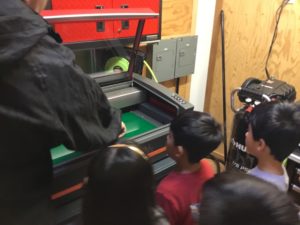 These machines use the designs uploaded from design software (called Computer Aided Design or CAD) to make whatever engineers have imagined.
These machines use the designs uploaded from design software (called Computer Aided Design or CAD) to make whatever engineers have imagined.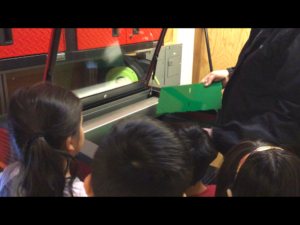
I explained to the students that this process is continuous because after something is created it can be improved by asking again what ideas do I have to make it better, then designing it or creating a plan, and creating the product that you’ve designed.
I wanted to introduce the engineering design process to the students in a scaffolded way. There just wasn’t enough time to go through the entire process with them, so I explained it to them and let them know that they would be seeing only the “fabrication or making” part of it. 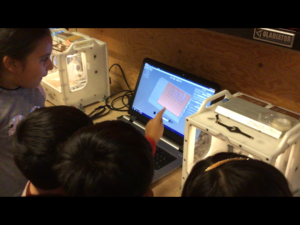 I felt that the students had a good understanding of the engineering design process and one day would be able to take something from idea to product using the engineering design process.
I felt that the students had a good understanding of the engineering design process and one day would be able to take something from idea to product using the engineering design process.
Then, a few days after students went to the Fab Lab and saw how a plan or design was created, one of my schools was visited by the Innovation lab from the NC A&T School of Engineering. 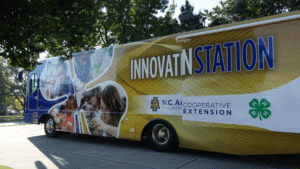 This lab is a model design studio. Students come up with an idea for something that they want to create (as many students recognized as the ask and idea phase of the engineering design process) and design it on their TinkerCAD software.
This lab is a model design studio. Students come up with an idea for something that they want to create (as many students recognized as the ask and idea phase of the engineering design process) and design it on their TinkerCAD software. .
.
I could not believe that this was happening during the same week that I had planned a visit from the FAB LAB. Coincidence or cooperation? Through collaboration with the MCAS FRC East FAB LAB and the NC A&T Engineering Department, students got a chance to see almost the entire engineering design process in action.
They saw how you can ask a question about how to solve a problem, then think about ideas to solve it, later design that idea, and finally create it.
